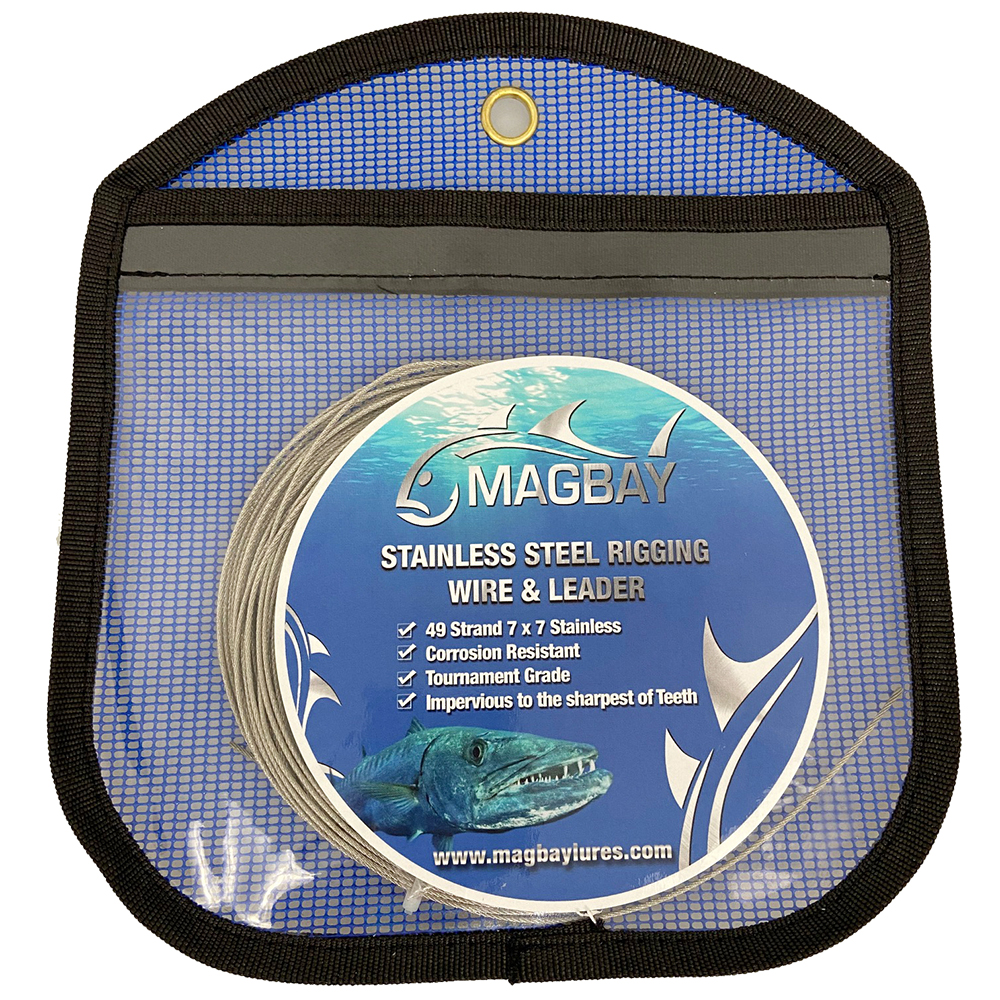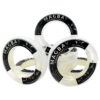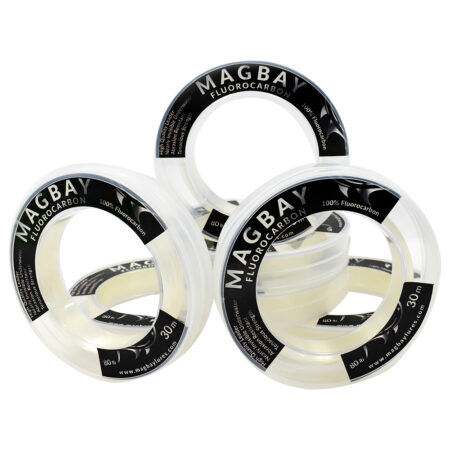Stainless Steel Rigging Wire
From: $14.95 - $26.95
Multi Test Stainless Steel Fishing Wire
MagBay’s high strength fishing wire offers premium bite protection. With this high quality wire in your lure bag, we ensure an amazing sportfishing experience!
- Multiple Strengths Available
- 49 Strand 7×7 cable
- Stainless steel wire
Features:
- Corrosion resistant
- Kink resistant
- Optimum Bite protection
- 30 feet of stainless steel wire leader
Electrolysis occurs when two different metals come into contact with each other in the presence of an electrolyte, such as saltwater, and an electric current is generated. This can cause the weaker metal to corrode and weaken, leading to potential failure of the terminal tackle.
When it comes to fishing, electrolysis can be a concern when using different metals in your terminal tackle. For example, using aluminum crimps with stainless steel wire can cause electrolysis to occur, as aluminum is a weaker metal than stainless steel. This can lead to corrosion and weakening of the aluminum crimp over time, potentially resulting in the failure of the terminal tackle.
Using brass crimps with stainless steel wire can also cause electrolysis to occur, as brass is a weaker metal than stainless steel. However, brass is more resistant to corrosion than aluminum, so it may hold up better in saltwater environments.
To avoid electrolysis and potential failure of your terminal tackle, it is generally recommended to use crimps made of the same material as your wire or fishing line. For example, if you are using stainless steel wire, it is best to use stainless steel crimps.
In summary, electrolysis can be a concern when using different metals in your terminal tackle. While both aluminum and brass crimps can cause electrolysis to occur with stainless steel wire, brass may hold up better in saltwater environments due to its increased resistance to corrosion. However, to avoid potential failure of your terminal tackle, it is generally best to use crimps made of the same material as your wire or fishing line.
| Strand | 47 |
|---|---|
| Material | Stainless Steel |
| Weight Test | 150, 280, 480, 900 |
| MPN | ssw500-spool |
Be the first to review “Stainless Steel Rigging Wire” Cancel reply
Related products
100% Fluorocarbon




Reviews
There are no reviews yet.